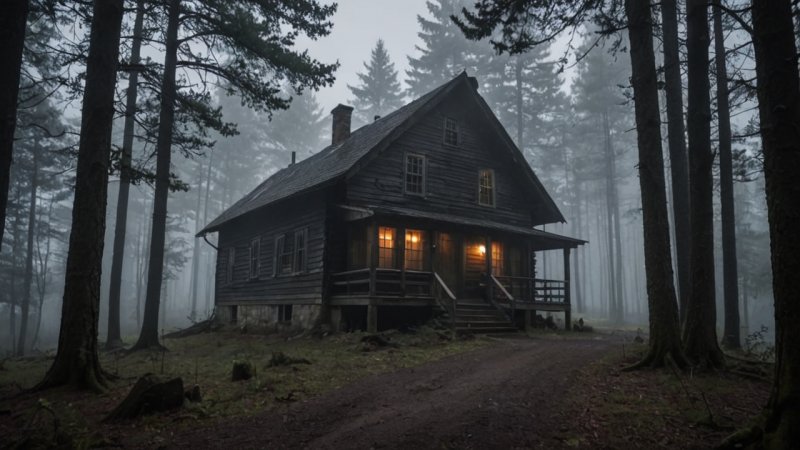The setting in literature serves as more than just a backdrop for the action; it is a dynamic force that shapes the characters and drives the narrative forward. In thrillers, where tension and suspense are paramount, the environment can amplify the psychological depth of characters, influence their decisions, and affect their relationships. This article delves into how various settings in thrillers impact character development, demonstrating that the geographical, temporal, and cultural contexts are not merely decorative but crucial to understanding the motivations and transformations of characters within the genre.
The Role of Setting in Establishing Atmosphere
The atmosphere of a thriller is often dictated by its setting. A dark, rain-soaked city, a remote cabin in the woods, or a bustling urban landscape each contribute to the overall mood of the story. For instance, in novels like The Girl with the Dragon Tattoo by Stieg Larsson, the cold, harsh Swedish landscape mirrors the emotional isolation of the characters, particularly Lisbeth Salander. The starkness of the setting accentuates Salander's struggles and resilience, illustrating how the environment can reflect and amplify a character's internal conflicts.
Geographical Influence on Character Choices
Geographical settings can significantly influence characters' choices and actions. In thrillers that take place in urban settings, characters often navigate complex social dynamics and moral ambiguities. For example, in Gone Girl by Gillian Flynn, the seemingly idyllic suburban setting contrasts sharply with the dark secrets and manipulations that unfold. The setting becomes a character in its own right, affecting the protagonist, Nick Dunne, and his perception of reality. The claustrophobic nature of suburbia, with its watchful neighbors and close-knit community, creates an environment where lies thrive and paranoia escalates, shaping Nick's decisions as he attempts to unravel the truth.
Temporal Settings and Character Evolution
The time period in which a thriller is set can also play a pivotal role in character development. Historical settings often add layers of complexity to characters, as they must navigate the societal norms and restrictions of their time. For example, in The Silence of the Lambs by Thomas Harris, the late 20th-century setting contextualizes the psychological thriller within the framework of evolving criminal psychology and gender dynamics. Clarice Starling's character is shaped not only by her personal experiences but also by the societal expectations of women in law enforcement during that era. The temporal setting challenges her and influences her development as she confronts both external threats and internal doubts about her identity and capabilities.
Cultural Context and Character Motivation
Cultural settings can provide rich backdrops that inform character motivations and conflicts. In thrillers that explore different cultures, characters often grapple with their identities and the expectations placed upon them. Consider In the Woods by Tana French, where the Irish landscape is intertwined with the protagonist's past. The setting is steeped in history and folklore, which impacts the main character, Rob Ryan, as he navigates personal trauma while investigating a murder. The cultural context not only drives the plot but also influences Ryan's relationships with other characters, adding depth to his character arc and shaping his responses to the unfolding mystery.
Psychological Impact of Setting on Characters
The psychological impact of setting is particularly pronounced in thrillers, where the environment can evoke feelings of fear and anxiety. Characters often respond to their settings in ways that reveal their psychological states. For example, in Misery by Stephen King, the isolated mountain home of Annie Wilkes serves as a claustrophobic prison for Paul Sheldon, reflecting his desperation and vulnerability. The setting amplifies his psychological struggle, turning the house into a symbol of both captivity and the unpredictable nature of his captor. As the tension escalates, the setting becomes a catalyst for Paul’s transformation, forcing him to confront not only his physical predicament but also his own inner demons.
Creating Tension Through Setting
Thrillers thrive on tension, and the setting can be a powerful tool for building suspense. A well-crafted setting not only establishes the mood but also creates obstacles and conflicts that characters must navigate. In Shutter Island by Dennis Lehane, the isolated mental institution becomes a character in itself, shrouded in mystery and danger. The island's rugged terrain and unpredictable weather create external challenges that mirror the protagonist's internal turmoil. As Teddy Daniels unravels the truth, the setting intensifies the stakes, underscoring the psychological games at play and ultimately leading to a shocking resolution.
Conclusion
The impact of setting on character development in thrillers is profound and multifaceted. From geographical influences to cultural contexts and psychological implications, the setting shapes characters in ways that enhance the narrative’s tension and complexity. By understanding the interplay between setting and character, readers can gain deeper insights into the motivations and transformations that drive the stories they love. Ultimately, it is this intricate relationship that makes thrillers not just suspenseful reads, but also rich, character-driven explorations of the human experience.






